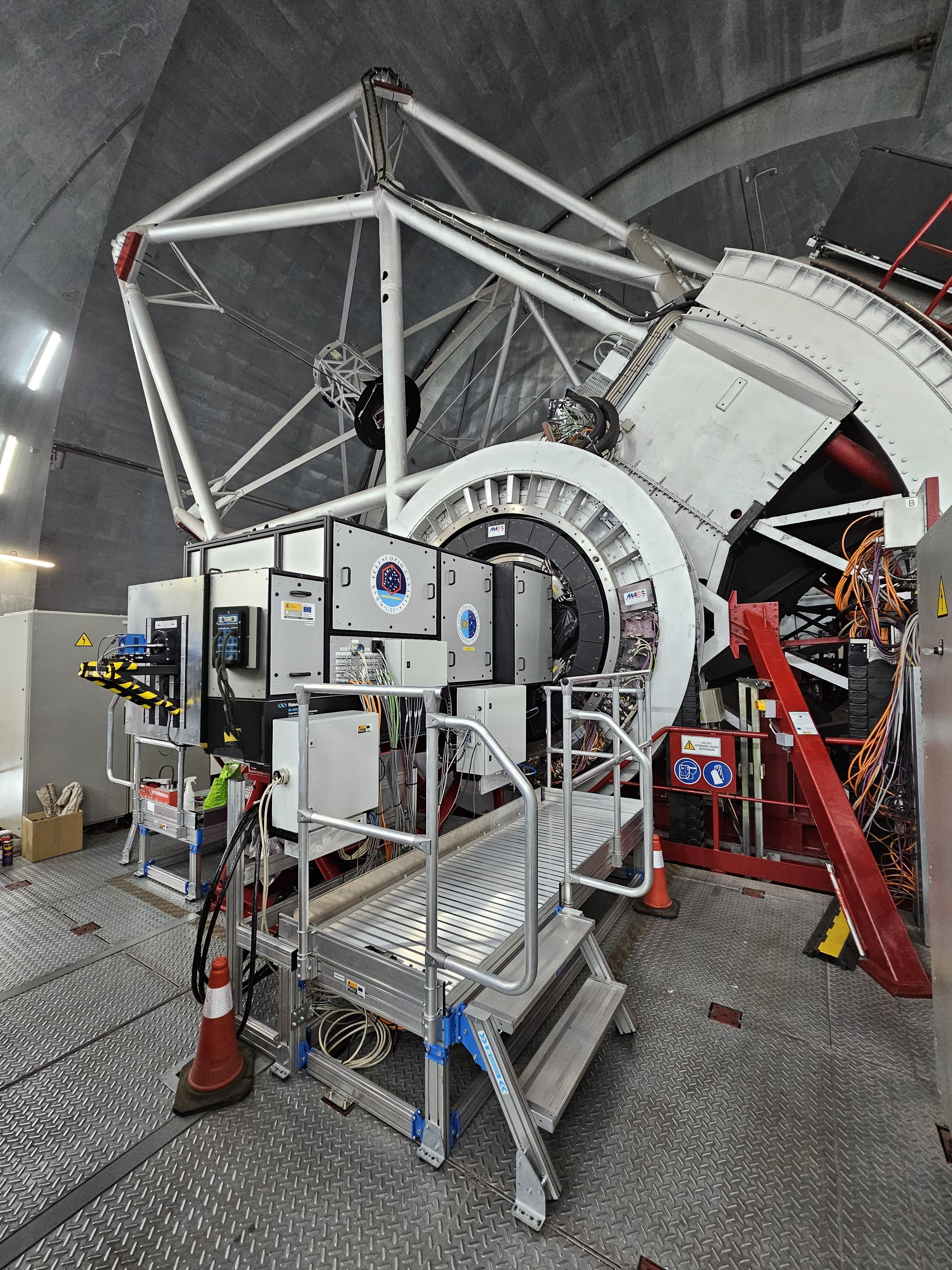Introducción
GTCAO es un sistema post foco situado en la plataforma Nasmyth B, que corrige el haz óptico del telescopio para alimentar el instrumento científico colocado a continuación. GTCAO sigue el diseño clásico de un sistema de AO (Óptica Adaptativa) con el uso de dos parábolas idénticas fuera del eje, manteniendo la distancia focal efectiva del telescopio. El Día 1, el sistema dispondrá de un solo espejo deformable, conjugado con la pupila del telescopio, y utilizará estrellas naturales (NGS) para el sensado del frente de onda.
GTCAO proporcionará un haz corregido que permitirá alcanzar, para estrellas brillantes, una razón de Strehl de 0.65 en la banda K. El tamaño del campo transmitido es de 1.5 minutos de arco de diámetro y el diseño óptico del sistema está preparado para incluir en el futuro, como opción, un corrector de dispersión atmosférica (ADC) que permitiría no degradar el rendimiento del sistema hasta ángulos cenitales de 60º.
GTCAO emplea un sensor de frente de onda del tipo Shack-Hartmann con 20x20 subaperturas y un espejo deformable con 21x21 actuadores. Para la corrección de tip-tilt utiliza el espejo secundario del telescopio GTC.
El sistema se concibió desde el inicio para que pudiera ser mejorado con un sistema de estrella guía laser para aumentar la cobertura en el cielo, y con un sistema de óptica adaptativa multicongujado para aumentar el tamaño del campo de visión corregido. La actualización a estrella guía láser (LGS) se encuentra actualmente en desarrollo (ver Extensión a LGS , al final). La actualización a multiconjugado consistiría en introducir un segundo espejo deformable en el camino óptico del sistema, que estaría conjugado a una altitud aproximada de 10 Km.
El primer instrumento científico que usará GTCAO será FRIDA (inFRared Imager and Dissector for Adaptive optics), un espectrógrafo infrarrojo de campo integral con capacidad para tomar imágenes.

Vista de GTCAO instalado en la plataforma Nasmyth B de GTC
Nota: Este proyecto ha sido cofinanciado por el Fondo Europeo de Desarrollo Regional (FEDER) dentro del marco del Programa Operativo de Canarias 2007-2013, Eje 1, Tema Prioritario 2, al amparo de la Resolución nº 364 de 25 de noviembre de 2014 de la Agencia Canaria de Investigación, Innovación y Sociedad de la Información (ACIISI), y del marco del Programa Operativo de Canarias 2014-2020, "Canarias objetivo de progreso".
Se prefinancia a través de un préstamo del Ministerio de Economía (Secretaría de Estado para Investigación) y el apoyo de la Agencia Estatal de Investigación (AEI) del Ministerio de Ciencia, Innovación y Universidades (MICIN) y el Fondo Europeo de Desarrollo Regional (FEDER) bajo subvenciones con referencias EQC2018-005097-P, EQC2019-006713-P e ICTS-2019-03-IAC-12. Actuación o proyecto financiado con fondos procedentes del Mecanismo de Recuperación y Resiliencia de la Unión Europea – NextGenerationEU.
